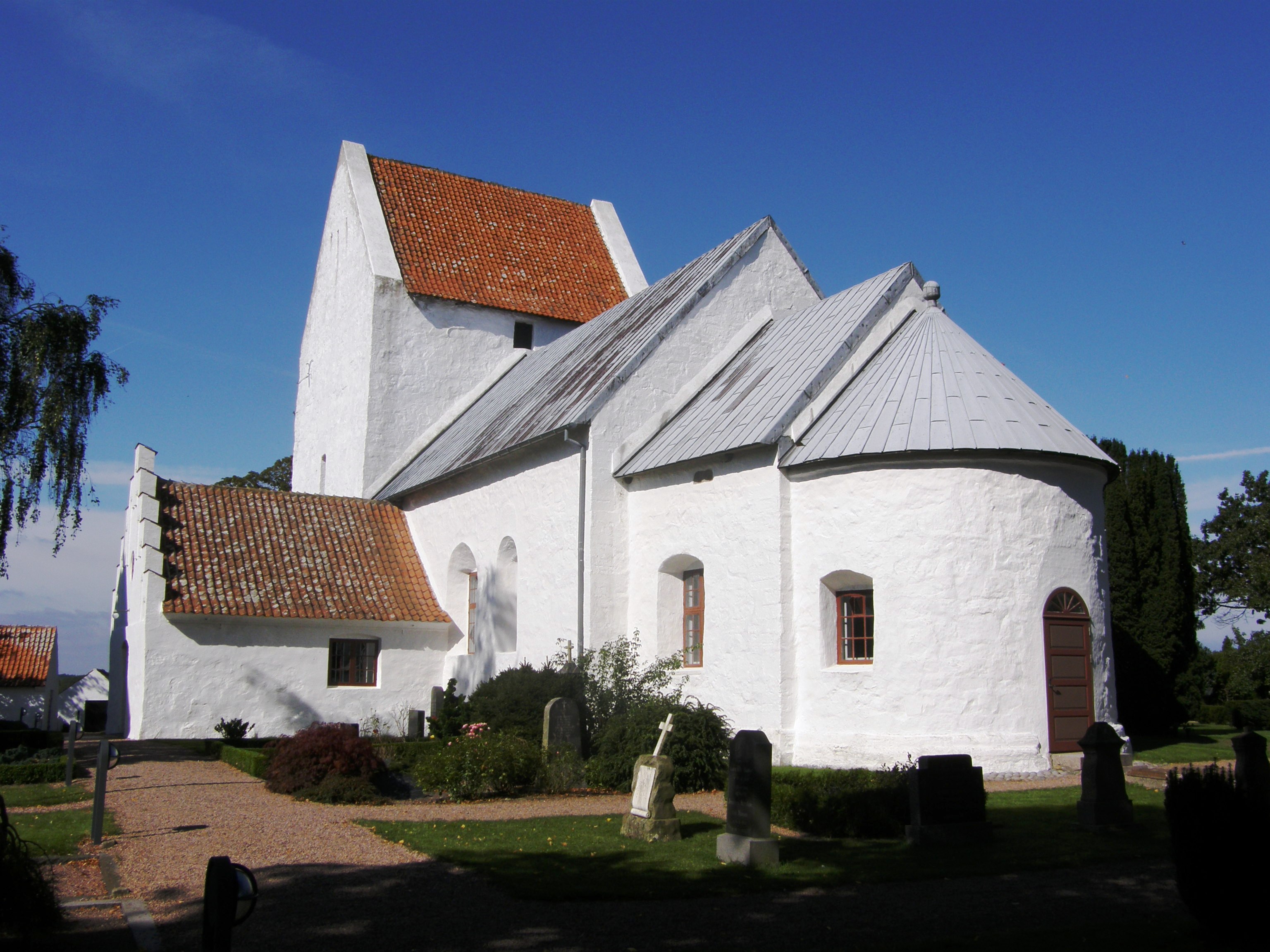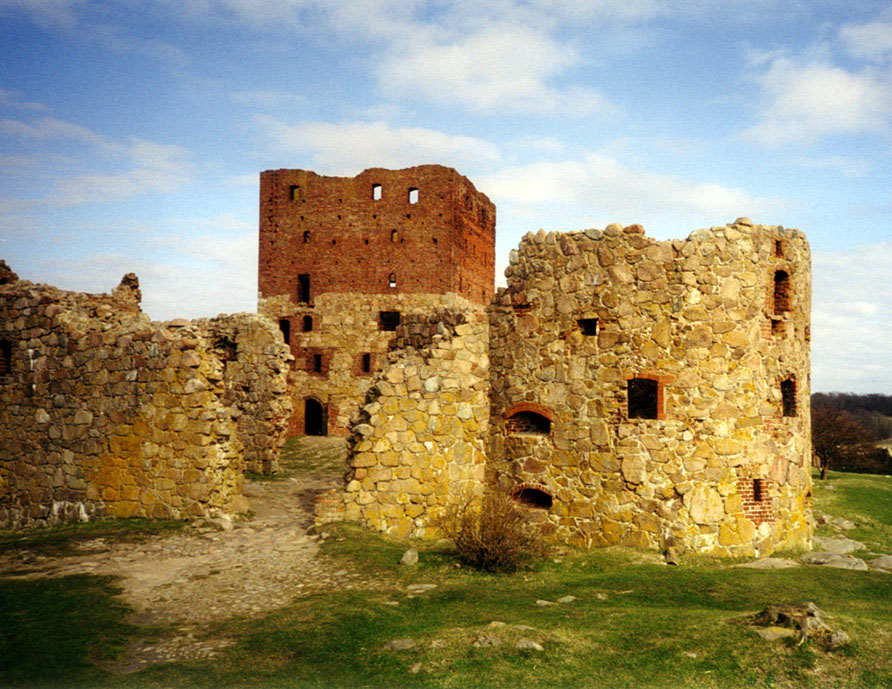|
Ibsker
St. Ib's Church (''Sankt Ibs Kirke'' or Ibsker), 3 km south-west of Svaneke on the Danish island of Bornholm, is a fine 12th century Romanesque building. The altarpiece was painted by Christoffer Wilhelm Eckersberg in 1846.Ibs Kirche på Bornholm ''Bornholmerguiden.dk'' Retrieved 29 June 2011 The Renaissance pulpit (ca 1600) was decorated by in 1964 with ceramics of the four evangelists.Sankt Ibs Kirke (Bornholm) ''Den store Danske'' Retrieved 29 June 2011.
|
List Of Churches On Bornholm
This is a list of churches on the island of Bornholm in eastern Denmark. , ''Bornholms Museer''. Retrieved 4 October 2012. The list See also * *References {{reflist |
Svaneke
Svaneke (''Swencke'' in 1410, from old Danish ''swan'' swan and ''*wīka'' inlet) is a small town on the eastern coast of the Baltic island of Bornholm, Denmark. It lies mainly in Svaneke parish and partly in Ibsker parish. It is Denmark's easternmost and until few years ago the smallest and now the second smallest (only Ærøskøbing is smaller) chartered town with a population of 1,079 as of 1 January 2022. History Svaneke probably dates back to the 13th century when herring fishing was practiced along Bornholm's east coast. The precise date at which it was granted the status of market town is not known but it was no doubt at the beginning of the 16th century as by 1543 it had a mayor and a municipal council."Danmarks Købstæder: Svaneke" Retrieved 7 May 2010. In 1610, almost hal ... [...More Info...] [...Related Items...] OR: [Wikipedia] [Google] [Baidu] |
Bornholm
Bornholm () is a Danish island in the Baltic Sea, to the east of the rest of Denmark, south of Sweden, northeast of Germany and north of Poland. Strategically located, Bornholm has been fought over for centuries. It has usually been ruled by Denmark, but also by Sweden and by Lübeck. The ruin of Hammershus, at the northwestern tip of the island, is the largest medieval fortress in northern Europe, testament to the importance of its location. Bornholm and Ertholmene comprise the last remaining Danish territory in Skåneland east of Øresund, having been surrendered to Sweden in 1658, but regained by Denmark in 1660 after a local revolt. The island is known as ("sunshine island") because of its weather and ("rock island") because of its geology, which consists of granite, except along the southern coast. The heat from the summer is stored in the rock formations and the weather is quite warm until October. As a result of the climate, a local variety of the common fig, known ... [...More Info...] [...Related Items...] OR: [Wikipedia] [Google] [Baidu] |
Denmark
) , song = ( en, "King Christian stood by the lofty mast") , song_type = National and royal anthem , image_map = EU-Denmark.svg , map_caption = , subdivision_type = Sovereign state , subdivision_name = Danish Realm, Kingdom of Denmark , established_title = History of Denmark#Middle ages, Consolidation , established_date = 8th century , established_title2 = Christianization , established_date2 = 965 , established_title3 = , established_date3 = 5 June 1849 , established_title4 = Faroese home rule , established_date4 = 24 March 1948 , established_title5 = European Economic Community, EEC 1973 enlargement of the European Communities, accession , established_date5 = 1 January 1973 , established_title6 = Greenlandic home rule , established_date6 = 1 May 1979 , official_languages = Danish language, Danish , languages_type = Regional languages , languages_sub = yes , languages = German language, GermanGerman is recognised as a protected minority language in t ... [...More Info...] [...Related Items...] OR: [Wikipedia] [Google] [Baidu] |
Romanesque Architecture
Romanesque architecture is an architectural style of medieval Europe characterized by semi-circular arches. There is no consensus for the beginning date of the Romanesque style, with proposals ranging from the 6th to the 11th century, this later date being the most commonly held. In the 12th century it developed into the Gothic style, marked by pointed arches. Examples of Romanesque architecture can be found across the continent, making it the first pan-European architectural style since Imperial Roman architecture. The Romanesque style in England and Sicily is traditionally referred to as Norman architecture. Combining features of ancient Roman and Byzantine buildings and other local traditions, Romanesque architecture is known by its massive quality, thick walls, round arches, sturdy pillars, barrel vaults, large towers and decorative arcading. Each building has clearly defined forms, frequently of very regular, symmetrical plan; the overall appearance is one of simplic ... [...More Info...] [...Related Items...] OR: [Wikipedia] [Google] [Baidu] |
Christoffer Wilhelm Eckersberg
Christoffer Wilhelm Eckersberg (2 January 1783 – 22 July 1853) was a Danish painter. He was born in Blåkrog in the Southern Jutland region of Denmark. He went on to lay the foundation for the period of art known as the Golden Age of Danish Painting, and is referred to as the "Father of Danish painting". Life Growing up and early training On 2 January 1783, Christoffer Wilhelm Eckersberg was born in Blåkrog in the Duchy of Schleswig (now in Aabenraa Municipality, in the southern part of Jutland in Denmark), to Henrik Vilhelm Eckersberg, a painter and carpenter, and Ingeborg Nielsdatter. In 1786 the family moved to Blans, a village near the Alssund, where he enjoyed drawing pictures of the surrounding countryside, and taking sailing tours in his father's boat. After confirmation he began his training as a painter under church and portrait painter Jes Jessen of Aabenraa (1797–1800). He continued his training at age 17 under Josiah Jacob Jessen in Flensborg, where he ... [...More Info...] [...Related Items...] OR: [Wikipedia] [Google] [Baidu] |
Paul Høm
Paul Briegel Høm (2 May 1905, Ballerup – 25 September 1994, Gudhjem) was a Danish artist who is remembered for his religious paintings and brightly coloured stained glass windows which decorate a number of Danish churches. Biography Høm studied at the Danish Academy from 1924 to 1929 under Aksel Jorgensen and Sigurd Wandel. His painting, primarily inspired by Jørgensen, was mainly of members of his family, especially his wife and children whom he depicted in strong bright colours. In 1943, he moved to Gudhjem on the island of Bornholm where his work benefitted from the bright light and his friendship with Helge Nielsen. He decorated a number of churches with altarpieces, frescos and mosaics, especially on Bornholm, often working with the architect Rolf Graae. His work can also be found in Kvong Church near Varde, Bräkne-Hoby in Blekinge (1957–59) and Christian's Church in Lyngby. Several of his works were completed together with whom he married in 1947. Together they ... [...More Info...] [...Related Items...] OR: [Wikipedia] [Google] [Baidu] |
Kalkmalerier
Church frescos or church wall paintings (Danish: ''kalkmalerier'') are to be found in some 600 churches across Denmark, no doubt representing the highest concentration of surviving church murals anywhere in the world. Most of them date back to the Middle Ages and were uncovered by Jacob Kornerup (1825–1913) who carried out restoration work in 80 churches across the country towards the end of the 19th century. They lay hidden for centuries as after the reformation, they were covered with limewash (Danish: ''kalk'') only to be revealed and restored during the course of the 19th and 20th centuries. In most of Europe medieval frescos, extremely common in the Middle Ages, were more likely to be removed completely during the Reformation or in subsequent rebuildings, or merely as they aged. The oldest frescos, dating back to the 12th century, were painted in the Romanesque style by artists from elsewhere in Europe but those from the 14th century and thereafter are in the Gothic styl ... [...More Info...] [...Related Items...] OR: [Wikipedia] [Google] [Baidu] |
Candelabra
A candelabra (plural candelabras) or candelabrum (plural candelabra or candelabrums) is a candle holder with multiple arms. Although electricity has relegated candleholders to decorative use, interior designers continue to model light fixtures and lighting accessories after candelabra and candlesticks. Accordingly, the term candelabra has entered common use to describe small-based light bulbs used in chandeliers and other lighting fixtures made for decoration as well as lighting. In Judaism and in the Philippine religion Iglesia ni Cristo, the menorah is a special kind of candelabrum. The Candelabra is also used in certain Eastern Catholic and Eastern Orthodox church architecture and liturgy by bishops as the Trikiridikiri. Singular and plural This word originally came from Latin, in which ''candelabrum'' is the singular form and ''candelabra'' is the plural. Over time, English usage changed so that ''candelabra'' as the singular and ''candelabras'' as the plural is no ... [...More Info...] [...Related Items...] OR: [Wikipedia] [Google] [Baidu] |
Churches In Bornholm
Church may refer to: Religion * Church (building), a building for Christian religious activities * Church (congregation), a local congregation of a Christian denomination * Church service, a formalized period of Christian communal worship * Christian denomination, a Christian organization with distinct doctrine and practice * Christian Church, either the collective body of all Christian believers, or early Christianity Places United Kingdom * Church (Liverpool ward), a Liverpool City Council ward * Church (Reading ward), a Reading Borough Council ward * Church (Sefton ward), a Metropolitan Borough of Sefton ward * Church, Lancashire, England United States * Church, Iowa, an unincorporated community * Church Lake, a lake in Minnesota Arts, entertainment, and media * ''Church magazine'', a pastoral theology magazine published by the National Pastoral Life Center Fictional entities * Church (''Red vs. Blue''), a fictional character in the video web series ''Red vs. Blue'' * Churc ... [...More Info...] [...Related Items...] OR: [Wikipedia] [Google] [Baidu] |
Romanesque Architecture In Denmark
Romanesque may refer to: In art and architecture *First Romanesque, or Lombard Romanesque architectural style *Pre-Romanesque art and architecture, a term used for the early phase of the style *Romanesque architecture, architecture of Europe which emerged in the late 10th century and lasted to the 13th century **Romanesque secular and domestic architecture **Brick Romanesque, North Germany and Baltic **Norman architecture, the traditional term for the style in English **Spanish Romanesque **Romanesque architecture in France *Romanesque art, the art of Western Europe from approximately AD 1000 to the 13th century or later *Romanesque Revival architecture, an architectural style which started in the mid-19th century, inspired by the original Romanesque architecture **Richardsonian Romanesque, a style of Romanesque Revival architecture named for an American architect Other uses * ''Romanesque'' (EP), EP by Japanese rock band Buck-Tick * "Romanesque" (song), a 2007 single by J ... [...More Info...] [...Related Items...] OR: [Wikipedia] [Google] [Baidu] |





